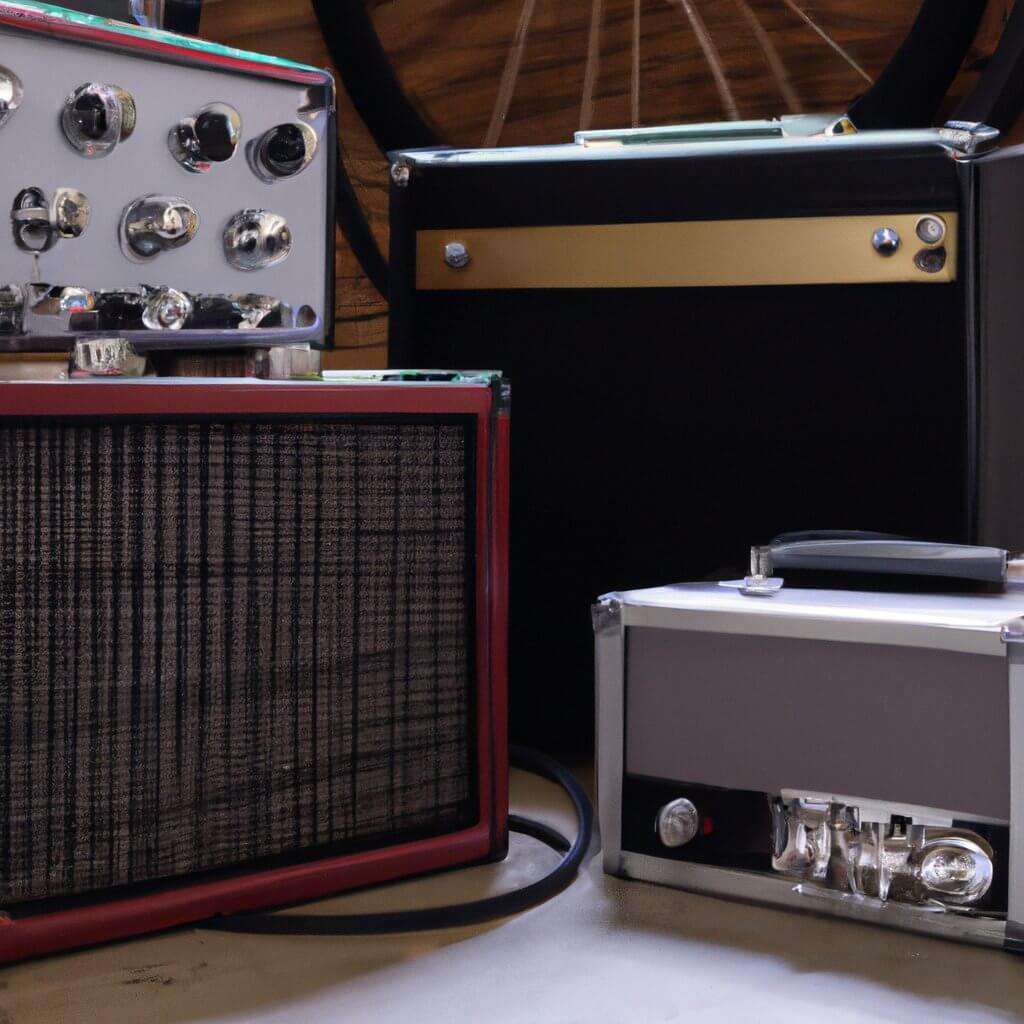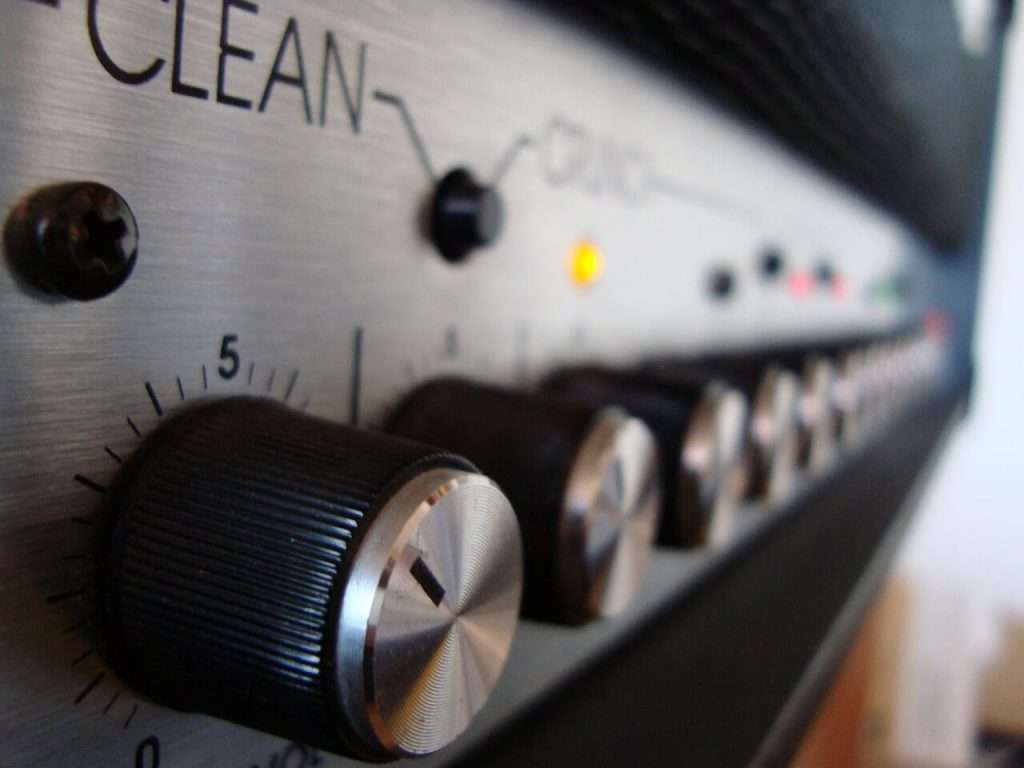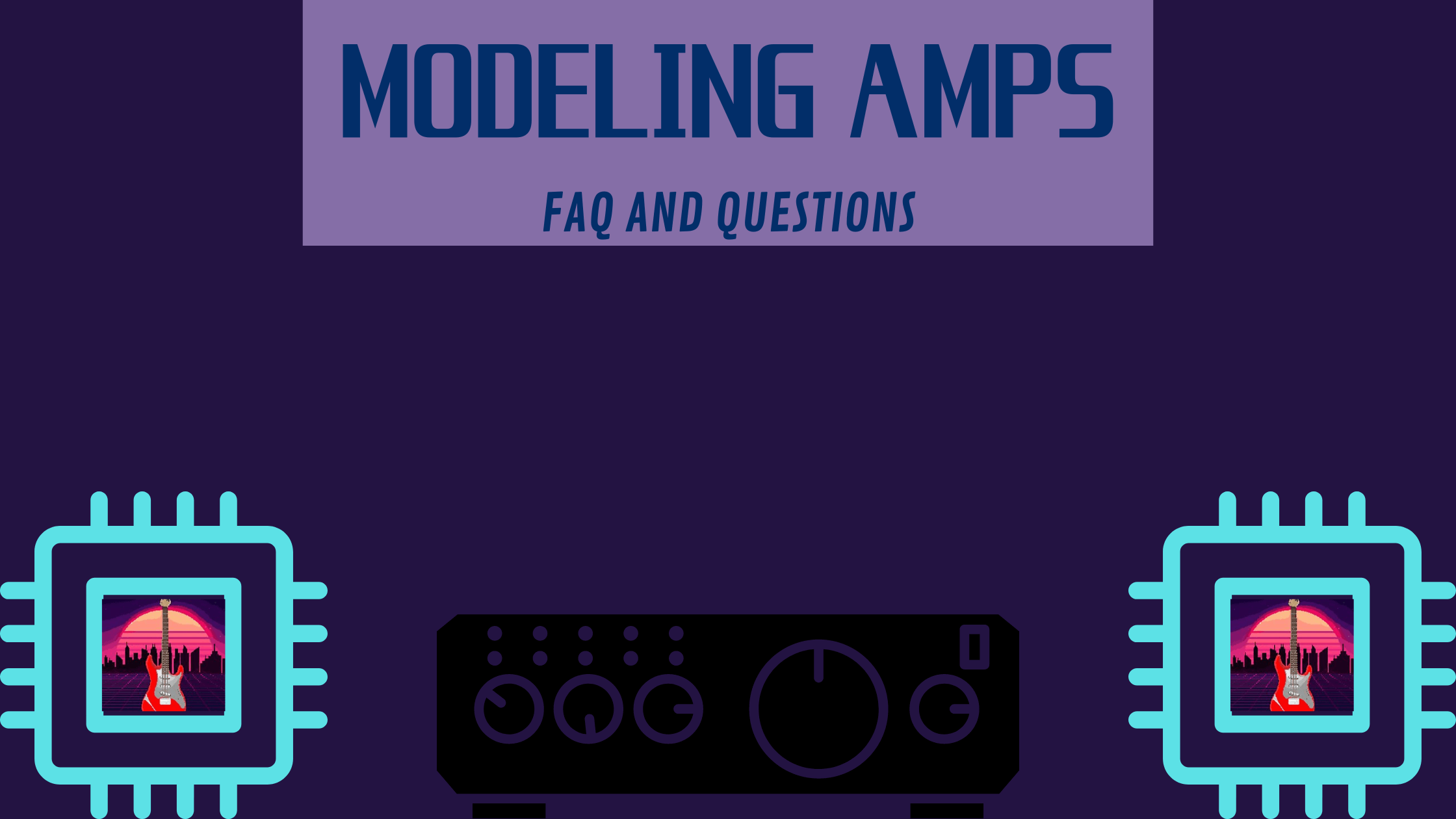A modeling amp (also called “amplifier simulator”) is a type of amplifier that uses digital technology to digitally emulate the sound of a variety of different built-in amp models, speaker cabinet models, and effect types, allowing the user to select different combinations of these to create their desired sound.
The result is often so realistic that the only way to tell the difference between a modeling amp and an actual amplifier is by looking at them.
Those are often used by musicians who want to achieve the same sound as their favorite guitarists or bands but don’t have access to their equipment, together with the use of plugins software, but they’re also popular with guitarists who want to play at home without disturbing family members or neighbors and a common choice for those who want to play electric guitar without having to carry around heavy equipment.
In this article we’ll see the difference in the sound-making part, the main advantages and disadvantages and I’ll try to answer to the most common questions about those: you can check the list of topics of this post down below and see if there’s something that might help you somehow (I would be a liar if I tried to act like the one that wants to read everything and doesn’t skip half of the web pages when I search something, too lazy for that usually!).
Indice dei contenuti
PROS AND CONS OF MODELING AMPLIFIERS
What are the Advantages?
- Easy to carry around and lightweight: they work thanks to software and chips, so you can get A LOT of stuff (sound-wise) with way less weight and problems when you try to take it somewhere for gigging, and that allows you to have a huge amount of options for your guitar sound but without the added burden of huge pedalboards or cabinet speakers and heads to take with you always;
- Cheaper, way cheaper: you can get tons of different sounds from amp heads, speakers and very often also guitar effects all within a single gear unit, allowing you to get the possibility to sound like your guitar hero and band that you want to sound like without having their (often) insanely high budget money;
- Huge versatility: beyond saving money you can get also the possibility of playing a lot of different sounds (this is actually another advantage that actually comes to the previously mentioned cheaper prices), and experiment with your gear (some models also have dedicated apps that can take this part even further with the possibilities).
- Presets: you can save combinations of settings and models and have them available as soon as you need them easily, and usually you get a storage that is good enough to save tens and tens of presets;
- Durability: solid state amps are durable and reliable, but tube amps can definitely feel the passing of time as the valves and tubes deteriorate and the sound gets worse with time, so you have to replace them periodically and therefore spend for the replacements as long as you use them, a problem that modeling amps don’t have as they simply replicate the sound of tube models without actually having them inside.
What Are The Cons?
- Learning curve: you really have a lot of settings usually and for this reason the huge availability of settings and options can seem a bit overwhelming for new users approaching to this technology and for guitar beginners (a bit more considering that you might not know how a specific effect sounds, not talking about the specific model of an effect but also about how a phaser in itself sound or a chorus, flanger and all that stuff);
- Too many options: similar to the previous, it can be confusing and annoying as well for someone, and also you probably won’t ever need all those options (maybe you won’t need more than 1/10 of the options as well very likely);
- It isn’t analogic: a lot of players prefer the analogic sound of tubes and old-style amps that give that warm full sound typical of classic rock and ideal for a lot of styles, so this digital-powered design isn’t really the most searched for these specific goals.

DIFFERENCES WITH OTHER TYPES OF AMPS
What’s different compared to tube/valve models
The main difference brought up when comparing those two technologies is the “feel”: one of the biggest and desired feature of a valve amp is the ability to “become one with the player” and be very responsive to volume changes of the guitar and in a slightly less important way with pedal effects.
The natural overdrive generated by a tube amp is another major factor in the amp choice, as you get a natural and very warm and also “organic” distortion from the pairing of guitar and amplifier alone, a characteristic that a lot of guitar players don’t want to replace with any simulator or “copy”.
As always that’s something that is heavily subjective though, and other players agree to switch to a digital-powered model for the versatility, ease of use and all the other benefits of this design.
What’s different compared to solid state models
Are modeling amps solid state?
Both are partially based on electronic components, but in the case of solid state the sound is actually an analogic sound (made using the transistors) while with simulator amps the sound is digitally generated (by a software and a processor).
Another thing that comes from that is that solid state have a “true” gain and can be distorted (despite sounding generally bad while the amplifier’s own overdrive comes after upping the gain, and that depends on the clipping, the same that happens with tubes but gives the universally wanted overdrive of a true valve amp).
A digital software, instead, won’t get a natural distortion because it is not generating sound through actual analogue sound making but actually by replicating the sound digitally (using “samples” of famous heads, cabinets, combos and effects).
In fact, it can be seen like a dynamic registration of the sound: you can play and modify the sound output from the simulator but the tone and actual soundwave has the same behaviour of a digitally recreated model of another piece of actual amplification gear.
What’s the Difference Between Modelers and Amp Profilers?
An Amp Modeler works by replicating (at a circuit level) an already built-in model of another amp/cabinet/head/effect, while Amp Profiling works by replicating an actual amp that you have, imitating the sound characteristics and making a digital copy of it (like a snapshot).
The first one works by replicating how the circuits of a specific model should behave and therefore generate the sound, while the second “””simply””” copies the sound (the output basically) that a model that you have makes when you play that specific model.
Generally, with the first one you have a huge amount of samples and presets that are already built-in (you can usually add more with patches and downloading more of those later but you already start with a very extensive library of given sounds) and with the second you make a copy of specific models that you own and the response it gives when combined with your electric guitar and effects pedals as well and allows you to carry around “the sound itself” without having to actually take the gear with you as you already have a very similar digital copy within the profiler itself (this is also used for gigs as it makes it way easier overall to setup all you need for playing).

OTHER COMMON QUESTIONS AND FAQS
Does the guitar matter when using Modelers Amps?
The answer is yes, as modelers only imitate the amp and not the electric guitar: for this reason, playing a Fender, a Les Paul or an Ibanez through the same amp simulator can give you a way different sound even with the same settings and preset.
Can I use pedals?
Yes, you can use pedals but some low-end models can be affected in a generally worse way compared to tubes and solid states.
In fact, though, this was mostly true with the very first model, and as time keeps going the tech gets better and better and nowadays you can usually use them, but you have to consider that the sound you might hear that the sound that you can hear is not always the best one.
Most mid and high end are obviously more pedals-friendly, but another thing to keep in mind is that, after all, modeling was designed in order to keep everything inside the same box, and make it less necessary to have a lot of gear around you, so adding pedals again to that setup would be kinda redundant usually.
How long do they last?
Given that they works thanks to circuits and software, they can work as much as solid state models and last even more than 30 or 50 years (it is actually hard to say in general but the fact that they work with circuits means that they will often only stop to work when the circuits are badly ruined, but given that reparation is usually another accessible solution, then the times can be quite stretched).
Something that you might have to consider, though, is that software can be potentially a problem to update and fix if a proprietary software of a model stop to be supported: so far, as they’re quite new, that is not a common thing, but is hard to predict whether it can become a common problem in the near future.
If you’re interested in that there’s also an interesting interview with amp technician Colleen Fazio here
Can you gig with a modeling amp?
Definitely yes, and beyond the huge advantages of having an insanely high amount of different models and the lightweight factor that prevents you to carry lots of gear around you can also see that a lot of famous guitarists already use them for their live gigs successfully.
Some examples:
- Guitarists using Axe-FX: John Mayer, The Edge(U2), Steve Vai, Matthew Bellamy(Muse), Metallica, John Petrucci(Dream Theather), Alex Lifeson, Aerosmith, John Satriani, Synister Gates(Avenged Sevenfold and a lot more (you can see more on the Fractal Audio artists page);
- Guitarists using Line 6: Bill Kelliher(Mastodon), Tosin Abasi and Javier Reyes(Animals As Leaders), Alex Skolnick (Testament), Herman Li(Dragonforce), Gary Holt(Exodus), Devin Townsend, Vernon Reid(Living Colour) and more (you can watch a more extensive list on Line6 artists page)
CONCLUSION: ARE MODELERS ANY GOOD AND WORTH IT?
This type of amp can be definitely useful for beginners willing to test and experiment for the first time with more models of amp (especially if the budget is low and also only if you like to experiment quite a bit with the settings), for musicians going around for gigs without the burden of a lot of heavy equipment and for people willing to test expensive gear with few bucks involved.
On the other hand, though, it might not be the best if you’re searching for your own signature sound as despite having a lot of presets and options you often have to stick with the ones provided by the modeler, as for adding more custom options you usually have to add pedals (quite redundant considering that one of the purpose of simulators was to replace the need for having a pricey pedalboard) and/or search patches online and see if you can add even more sounds.
The advancements in digital amps, though, has now reached very promising heights and is being used by a lot of established guitarists all around the world successfully, and probably this is going to become an even wider phenomenon eventually.
I hope that this article has helped you to clear some doubts about this technology and also given some more info for choosing one type of amplifier or another, have fun with your playing now after that long read!


